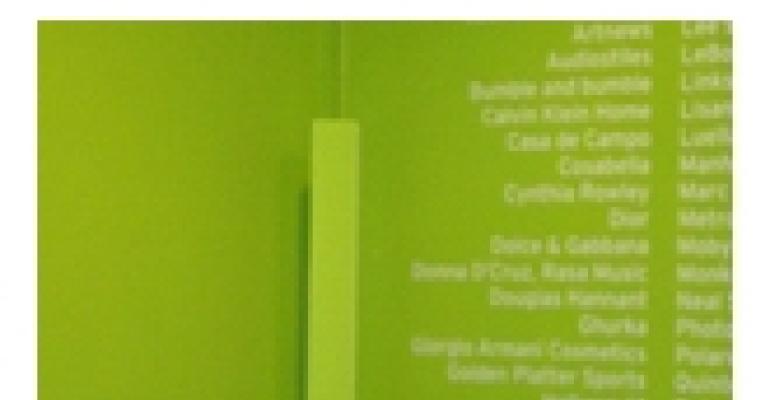TIP: Get array from it all.

Once an advantage enjoyed only by full-scale concerts and the biggest of big events, the dependable sound quality of line array speaker systems is now available to clients of more modest needs — and means. That's the word from event sound pro Renee Shaker, president of New York's Sine Audio.
Shaker notes that the recent development of smaller line array systems and single-cabinet vertical array systems is benefiting event clients with audio budgets in the $5,000 to $10,000 range. She cites manufacturer Bose's MA12 Panaray loudspeakers — “ideal for small events with a guest list under 200 people” — and the SLS Loudspeaker, which she says “works well for larger events of 500 to 1,000 people.”
Not only do the new speakers deliver better audio quality for both music and speech, she says, but they “enhance room coverage and offer more flexibility in setup.” That's particularly useful when producing “distributed” sound — an audio concept she describes as “similar to surround-sound in home theater.” Unlike conventional audio setups that use two main speakers positioned at the head of the room — “Fine if, say, a band is the focal point of the evening's entertainment,” Shaker says — a distributed setup spreads things out.
With their wider dispersion patterns, the new array speakers may be placed throughout the event space “to provide more uniform coverage with a balance in sound levels.” And that, Shaker adds, is a major advantage for events such as cocktail parties, “where the music is for background ambience.” On top of that, minimal installation demands of the compact systems mean event clients save money on labor and equipment.
Then there's the look of the new speakers: “Instead of the big, black boxes that are usually stuck on top of black tripods, these new loudspeakers have the shape of sleek, thin columns,” Shaker says. To make the most of the speakers' aesthetic advantage, Sine has designed proprietary stands that extend the speakers' slender profile while raising them to the proper acoustic height for the event environment. The company also offers color-coordinated speaker covers “that have a minimal impact on sound quality, making these loudspeakers blend in even further with the overall event design,” she adds.

TIP: Enter the Digital Age.
Improvements in digital signal processing (DSP) and integrated technology have signaled the coming-of-age of digital consoles for event sound, says Sound Media's Lennox Foster.
According to the president of the Hollywood, Fla.-based event audio operation, the major advantage of digital console technology is its versatility. For basic sound needs at events, a digital console may be paired with a CD player to provide equalizer, sound effect, compressor and delay functions with minimal equipment, Foster notes. For recurring events, “The memory capability of the digital console is a winner,” he says. “You can recall the settings for a particular event, which reduces sound-check duration.”
Sound Media started offering digital consoles to its event clients three years ago “and kept on going from there,” Foster recounts. These days, the company is likely to offer clients the versatile Yamaha 01V — “our Swiss Army knife,” says Foster, who notes he uses the unit at least twice a week on event jobs. When grouped with a pair of Meyer Sound UPA-1P speakers and two wireless microphones, the audio setup “works for most small corporate events,” he adds.

Whatever the size of the event, Foster says that today's corporate event producers are looking to maximize available space. With its minimal size and diverse functionality, “One digital console will reduce your equipment footprint by reducing the external processing required,” resulting in a cleaner event look and reduced labor cost, he notes. “The production company prefers audio equipment to be heard and not seen,” he adds. “With digital technology, their wish is close to being realized.”
TIP: Amp it up.
For Lawrence Yeh of OUO Audio Visual, line array systems and digital consoles are two of his most effective tools in providing sound for the 1,000-plus event crowds he often serves. With analog systems, “You used to have separate instruments for every function — EQ {equalizers}, different processors,” he says. With the advent of digital technology, “Now you can just bring a laptop.” As for line array systems, there's something to be said for a sleek, curved, overhead profile — as opposed to speakers “stacked on the sides of a stage,” he adds.
So what is making things even more efficient on the event sound front? That would be the advent of both lightweight amplifiers and dual amp-speaker units, he notes.
“A lot of companies are using a combination of speaker and amp in one technology,” says the president of the Flushing, New York-based provider of audiovisual, production, entertainment and media services. That's a major advantage over past setups that required separate racks for the two components, he explains.
Using technology adapted from compact systems — the kind required for smaller PA (public address) jobs, where limited space demands limited equipment size — the new combos now can be used for large corporate events and concerts. For events of any size, new lightweight amps require less manpower to install.
According to Yeh, it's the combination of today's sleeker speakers, lightweight amps and diverse-function digital equipment — such as the mix he used at a recent concert for the American Cancer Society — that hits the right note for event sound today.
RESOURCES
OUO Audio Visual, 888/939-6935; Sine Audio 212/924-5727; Sound Media, 954/981-6408





